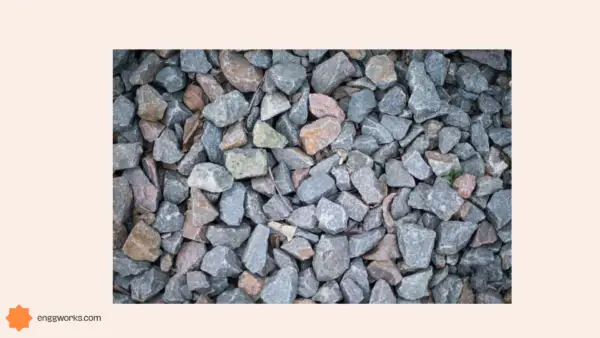The rebound hammer, also known as Schmidt Hammer, is one of the most popular non-destructive testing methods for measuring the compressive strength and quality of concrete and other rigid materials.
This handy tool provides a quick, convenient, and inexpensive way to estimate concrete strength in existing structures as well as newly poured concrete.
In this comprehensive guide, we will cover all key aspects of the rebound hammer test from its background, objective, working principle, procedure, interpretation, correlation to concrete strength, factors impacting results, standards, pros and cons, applications, and limitations. Read on for deeper insight into this highly useful concrete testing technique.
What is the Rebound Hammer Test?
The rebound hammer, invented by Swiss engineer Ernst Schmidt in the 1940s, works by impacting the surface of concrete to measure its hardness and resilience. It consists of a spring-loaded hammer that when pressed against the concrete, rebounds back a certain distance which is measured on a graduated scale.
The test hammer contains a plunger with a spring-loaded mass that is projected against the concrete surface when the hammer body is pushed. The rebound distance of this hammer depends on the hardness of concrete and is measured on an arbitrary scale.
Objective of the Rebound Hammer Test
The key objectives of the rebound hammer test are:
- To assess the uniformity and relative strengths at different points of a concrete element
- To evaluate the quality of concrete in relation to standard requirements
- To determine the early age compressive strength and rate of strength gain of concrete
- To estimate the in-place compressive strength of the concrete in an existing structure
- To assess the degree of deterioration of a concrete structure over time
Overall, it allows engineers to quickly and affordably determine concrete hardness and uniformity. When correlations are developed, it also approximates the compressive strength.
Principle of the Rebound Hammer Test
The rebound hammer test is based on the principle that the rebound of an elastic mass depends on the hardness of the surface against which its mass strikes. When the hammer hits the concrete, its spring-controlled mass rebounds back a certain distance which depends on the surface hardness. Harder concrete will result in a larger rebound whereas soft concrete will cause a smaller rebound.
The test hammer has a calibrated scale which allows converting this rebound distance into a strength grade or compressive strength value. The calibration chart is developed based on lab testing of concrete samples and empirically correlating their strength to the corresponding hammer rebound.
Rebound Hammer Test Procedure
The step-by-step rebound hammer test procedure is as follows:
- Select a clean, smooth, dry area on the concrete to conduct the test
- Hold the instrument perpendicular to the concrete surface
- Pull back the hammer body gently until it locks into position
- Release the hammer suddenly without disturbing its orientation so it impacts squarely
- Note down the rebound reading from the graduated scale
- Repeat steps 3-5 for at least 10-20 readings within a 10 cm radius
- Calculate the average of all readings which forms the final result
Proper rebound hammer testing technique is critical for reliable measurements. Special care should be taken to avoid defective or weakened areas in the concrete while testing.

Rebound Hammer Standards
The main rebound hammer test standards include:
- ASTM C805 – Provides standard test method for rebound hammer determination of concrete strength
- IS 13311 Part 2 – Covers rebound hammer tests for concrete
- BS EN 12504-2 – Specifies procedure for determination of rebound hardness
- ISO 8045 – Standard regulation for rebound hammers
These standards define the calibration, testing methodology, preparation requirements, age of concrete to be tested, number of test readings to be obtained, etc. for compliance and uniformity.
Interpreting Rebound Hammer Test Results
The direct reading obtained from a rebound hammer test is called a rebound index or rebound number (R). This value ranges from 10 to 100 based on the hammer scale used.
Higher rebound numbers indicate stronger, harder concrete. Typical R values would be:
- 20-30 – Very low strength concrete
- 30-40 – Low strength / Doubtful quality
- 40-60 – Good concrete
- 60+ – High strength concrete
However, the main use of rebound hammer tests is to assess the uniformity of concrete rather than just the absolute strength values. Scatter in readings (high standard deviation) is a sign of differential hardness and non-uniform concrete.
Correlating Rebound Number to Compressive Strength
While the raw rebound number provides a qualitative understanding of concrete hardness, it requires correlation to actual compressive strength test data per mix design or concrete type. This develops more reliable strength estimation models from the rebound index.
By simultaneously testing reference concrete cubes or drilled cores under compression testing and with the rebound hammer, mathematical relationships can be developed to correlate the R values to the ultimate compressive strength. With proper correlation and calibration, strengths can be predicted within +/- 15 to 20% accuracy in most cases.

As you can see there are different lines are interpolated in the graph. The graph is different for different positions which is clearly depicted. Suppose, if the average rebound number for horizontal position (concrete column) is 38(rebound index) as per graph the Compressive strength is 36N/mm2
Factors Affecting Rebound Hammer Test Results
Some variables that can impact rebound measurements include:
- Smoothness and flatness of the test surface
- Aggregate size mix proportions
- Age and moisture condition of concrete
- Hammer orientation during impact
- Wear and tear or damage of the hammer plunger
- Bonded surface layers or coatings on concrete
These factors contribute to variability in readings and must be minimized. Enough test readings are taken to reduce scatter caused by random local factors.
Advantages and Disadvantages of Rebound Hammer Tests
Some benefits of rebound hammers for testing concrete include:
Advantages
- Simple, economical, handheld apparatus
- Quick and easy testing
- Instant, on-site results
- Minimal surface preparation needed
- Usable on existing structures
- Suitable even for hard-to-reach areas
- Allows uniformity testing across large areas
Disadvantages
- Direct strength predictions may have ±15 to 20% error
- Not as consistently accurate as lab compression tests
- Results vary based on multiple parameters
- Surface factors like smoothness and saturation affect results
- Only suitable for near-surface strength testing
- Not usable on lightweight concrete and soft mortars
Applications of Rebound Hammer Testing
Rebound hammers have many uses including:
- Quality assurance testing of newly poured concrete
- Early age and rate of strength gain estimation
- In-place strength evaluation of existing structures
- Assessment of uniformity/differential hardness
- Durability estimation based on surface hardness
- Testing precast concrete members
- Suitable for concrete, mortars, grouts etc.
They are employed extensively in site investigations, condition assessments of structures, laboratory settings, pre/post-construction evaluations etc.
Limitations of the Rebound Hammer Test Method
Some drawbacks of the rebound hammer test that must be understood while interpreting results include:
- The test only measures near-surface hardness to 20 to 30 mm depth. Internal concrete strength cannot be predicted reliably.
- The method is not designed for very high strength concrete beyond 60 to 70 MPa since the rebound values flatten out.
- Rebound hammers cannot be reliably used for lightweight concrete with density < 1440 kg/m3
- Accuracy is poorer for concrete below 10 MPa and for semi-dry surfaces. Wet/saturated concrete should not be tested.
- Strength predictions without proper correlation and calibration against lab strength have higher errors.
Conclusion
The rebound hammer is an extremely useful non-destructive handheld apparatus for investigating concrete compressive strength and uniformity due to its simplicity, speed, and low cost. It works on the principle of determining concrete hardness based on the rebound of a spring-loaded mass impacting the surface which correlates to strength.
With this guide covering the key working aspects, methodology, interpretation, applications, and limits of rebound hammers, engineers can employ them optimally for in-situ testing and estimating strength trends in existing and new concrete structures.







